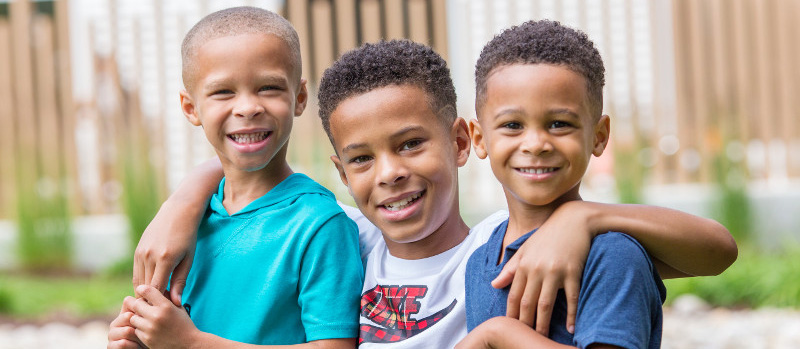Chest pain can be disconcerting for kids and parents alike. This is evident in a previous blog post we wrote about the topic – we have received more than 700 comments and questions from readers of all ages! Our goal of that blog was to help provide peace of mind to parents. While chest pain can be scary, it is rarely caused by an underlying heart condition. That said, the pain is very real, and many readers wondered what they can do about it.
Musculoskeletal chest pain, or non-heart related chest pain, occurs in as many as a third of all pediatric patients. In these patients with chest pain, it is only related to the heart less than 1% of the time. The other causes for this chest pain include costochondritis, muscle-related pain, pulmonary cases, like asthma, and idiopathic/ miscellaneous causes that don’t fit within these other categories.
The good news is that most of the time this pain goes away on its own without intervention. That said, when our kids are in pain, we want to help them feel better as quickly as possible. Here are some potential ways to help your child find relief. These suggestions are broken out by the potential cause of the pain:
Potential Treatments for Musculoskeletal Chest Pain in Kids
Costochondritis
Costochondritis, which is an inflammation of the cartilage in the breastbone, happens most frequently in adolescents and teens. Often it occurs following a respiratory illness. Patients describe this type of pain as sharp and stabbing or a dull pressure on the left side of the chest. It usually lasts seconds to minutes, appears suddenly and gets worse when breathing in or pushing on it. Sometimes it may also worsen by certain maneuvers such as horizontal arm bending.
Treatment: Costochondritis usually goes away on it’s own. If it’s lasting several weeks, you can give your child ibuprofen daily for 1-2 weeks for the pain. (Please follow the directions on the bottle and do not give NSAIDS to children for longer than a couple of weeks, as it can cause other health problems.) Applying heat, stretching and gentle massage to the area may also help. Athletes should avoid push-ups, dips, heavy weight lifting or any other movements that aggravate the pain until it has resolved as it may aggravate the area, prolonging pain. The vast majority of patients with improve within several weeks but a few may last for months with structured physical therapy possibly helping these patients.
Chest Muscle Strain
It’s is possible to strain the muscles in the chest, just like the calves or hamstrings. There are many muscles that make up the chest, both large – the pectorals, which are on top of the ribs – and small, the ones in between each rib. Both the large and small chest muscles can be strained from things like strenuous exercise and weight lifting, trauma such as car accidents or even vigorous, prolonged coughing during an illness. It can take a long time to recover from this type of injury. Every time we breathe, we stretch those muscles out, which can cause pain.
Treatment: We recommend similar treatment to costochondritis. You can give your child ibuprofen for a couple of weeks and apply heat and massage. Rest is key, especially if the cause was exercise related.
Precordial Catch Syndrome
We don’t know what causes precordial catch syndrome. We think it has something to do with the muscles. It is brief, with several seconds of sharp, stabbing pain that can happen at rest or with exercise. It tends to happen in athletes and is worse when coughing or breathing in.
Treatment: Because it comes and goes quickly, we don’t recommend treating it with ibuprofen. It usually slowly resolves during adolescence.
Anxiety and Stress
Musculoskeletal chest pain from anxiety can happen at rest or during exercise and usually happens within the context of a stressor, such as school anxiety or peer interactions. Kids with this type of pain may describe their heart as racing or palpitating with shortness of breath.
Treatment: When kids hear from a medical expert that their heart is not the cause of their chest pain, this often makes them feel better. If the pain persists, treatment will be centered around helping them with their anxiety. If measures such as relaxation and reassurance do not help, we may refer to psychology for further evaluation and treatment.
Idiopathic Chest Wall Pain
Much like “growing pains” in the legs, sometimes kids get musculoskeletal chest pain, and we can’t pinpoint a cause. We call this idiopathic chest wall pain. Kids describe it as a sharp, stabbing pain that happens at both rest and during exercise, lasting for seconds to minutes. It may occur sporadically over several months and will get better on its own. In this case, the muscles and cartilage are fine.
Treatment: We don’t recommend medicine in this case because it is not persistent and doesn’t last very long. Heat and gentle massage may improve symptoms.
The bottom line is that musculoskeletal chest pain in kids is really common and in only 1% of cases is it caused by an underlying heart condition. If your child is having chest pain ONLY with exercise, or if he is passing out during a bout of chest pain, then he should be evaluated by a doctor. It’s also reasonable to see your child’s main doctor if the pain has been going on for several months. He or she can offer tips for supportive therapy, like heat and ibuprofen.
Concerned about your child’s chest pain? Answer these six questions to help determine which symptoms are worrisome and which are not.




Hi , Thanks for the clear explanation on chest pain and its treatments . I learned a very good information about the impact, causes of chest pain. Keep updating us more blogs !